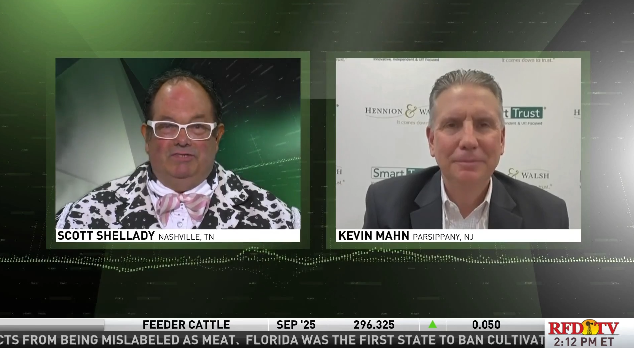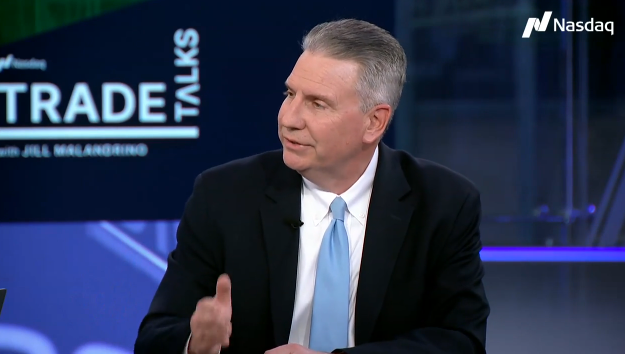
Global Stocks End the Week Mixed as Attention Turns to MLPs
Market Overview
Sources: Sources for data in tables: Equity Market and Fixed Income returns are from JP Morgan as of 03/16/18. Rates and Economic Calendar Data from Bloomberg as of 03/19/18. International developed markets measured by the MSCI EAFE Index, emerging markets measured by the MSCI EM Index. Sector performance is measured using GICS methodology.
Happening Now
U.S. stocks posted a decline last week as concerns over turnover in the Trump Administration and a potential global trade war gave investors pause. The S&P 500 Index declined 1.2%, the Russell Midcap Index fell 0.6%, and the Russell 2000, a gauge of the Nation’s smallest publically traded firms, lost 0.7%. On the international front, developed markets gained 0.2% while emerging markets advanced 0.5%. Turning to fixed income, the yield on the 10 Year U.S. Treasury note declined 5 basis points, ending the week at 2.85% down from 2.90% the prior Friday.
Jerome Powell, the new Chairman of the Federal Reserve (Fed), will proceed over his first FOMC meeting Wednesday which will very likely culminate with the announcement of 2018’s first interest rates hike of 25 basis points. Following the announcement, Powell will conduct his first press conference during which investors will likely hang on every word and pay close attention to the release of the Fed’s projections for the potential path of future interest rate changes. A hawkish projection that suggests a faster pace of tightening may weigh on investor sentiment and lead to a short term decline in stock prices. Despite the potential volatility that surrounds monetary policy announcements, we, at SmartTrust®, continue to be constructive on the global economy and believe we are in an advantageous environment for stock investors.
In other market moving news last week, the Energy sector, and master limited partnerships (MLPs) in particular, experienced some sharp volatility after the Federal Energy Regulatory Commission (FERC) ruled that it will no longer allow MLP interstate natural gas and oil pipelines to recover an income tax allowance in cost of service rates – a reversal of its current policy. Assets excluded from this ruling include gathering lines, intrastate pipelines, processing plants, terminals, fractionation facilities, and docks. However, according to The Master Limited Partnership Association, “It is important to remember that only those MLP pipelines whose rates are determined by cost-of-service rate-making regulated by FERC will be affected…” and, “…a large number of pipelines owned by MLPs, particularly newer expansion projects, have either negotiated or market rates that don’t go through this process.” Since seemingly no MLPs were spared from last week’s selloff, and as discussed above, not all will be impacted by this ruling, we believe investors will ultimately separate each variety and buying pressure will likely result in a rebound in the price of certain MLPs. The ultimate passage of an infrastructure spending bill could be supportive of MLPs as well.
2018 has proved to be a year during which headline risk has moved markets, volatility has returned, and despite short bouts of selling, stocks have moved marginally higher on the back of global economic growth. We believe as this bull market enters its ninth year, investors would be wise to understand the risks they take and try to balance those risks as best as possible.
Important Information and Disclaimers
Disclosures: Hennion & Walsh is the sponsor of SmartTrust® Unit Investment Trusts (UITs). For more information on SmartTrust® UITs, please visit www.smarttrustuit.com. The overview above is for informational purposes and is not an offer to sell or a solicitation of an offer to buy any SmartTrust® UITs. Investors should consider the Trust’s investment objective, risks, charges and expenses carefully before investing. The prospectus contains this and other information relevant to an investment in the Trust and investors should read the prospectus carefully before they invest.
Investing in foreign securities presents certain risks not associated with domestic investments, such as currency fluctuation, political and economic instability, and different accounting standards. This may result in greater share price volatility. These risks are heightened in emerging markets.
There are special risks associated with an investment in real estate, including credit risk, interest rate fluctuations and the impact of varied economic conditions. Distributions from REIT investments are taxed at the owner’s tax bracket.
The prices of small company and mid cap stocks are generally more volatile than large company stocks. They often involve higher risks because smaller companies may lack the management expertise, financial resources, product diversification and competitive strengths to endure adverse economic conditions.
Investing in commodities is not suitable for all investors. Exposure to the commodities markets may subject an investment to greater share price volatility than an investment in traditional equity or debt securities. Investments in commodities may be affected by changes in overall market movements, commodity index volatility, changes in interest rates or factors affecting a particular industry or commodity.
Products that invest in commodities may employ more complex strategies which may expose investors to additional risks.
Investing in fixed income securities involves certain risks such as market risk if sold prior to maturity and credit risk especially if investing in high yield bonds, which have lower ratings and are subject to greater volatility. All fixed income investments may be worth less than original cost upon redemption or maturity. Bond Prices fluctuate inversely to changes in interest rates. Therefore, a general rise in interest rates can result in the decline of the value of your investment.
Definitions
MSCI- EAFE: The Morgan Stanley Capital International Europe, Australasia and Far East Index, a free float-adjusted market capitalization index that is designed to measure developed-market equity performance, excluding the United States and Canada.
MSCI-Emerging Markets: The Morgan Stanley Capital International Emerging Market Index, is a free float-adjusted market capitalization index that is designed to measure the performance of global emerging markets of about 25 emerging economies.
Russell 3000: The Russell 3000 measures the performance of the 3000 largest US companies based on total market capitalization and represents about 98% of the investible US Equity market.
ML BOFA US Corp Mstr [Merill Lynch US Corporate Master]: The Merrill Lynch Corporate Master Market Index is a statistical composite tracking the performance of the entire US corporate bond market over time.
ML Muni Master [Merill Lynch US Corporate Master]: The Merrill Lynch Municipal Bond Master Index is a broad measure of the municipal fixed income market.
Investors cannot directly purchase any index.
LIBOR, London Interbank Offered Rate, is the rate of interest at which banks offer to lend money to one another in the wholesale money markets in London.
The Dow Jones Industrial Average is an unweighted index of 30 “blue-chip” industrial U.S. stocks.
The S&P Midcap 400 Index is a capitalization-weighted index measuring the performance of the mid-range sector of the U.S. stock market, and represents approximately 7% of the total market value of U.S. equities. Companies in the Index fall between S&P 500 Index and the S&P SmallCap 600 Index in size: between $1-4 billion.
DJ Equity REIT Index represents all publicly traded real estate investment trusts in the Dow Jones U.S. stock universe classified as Equity REITs according to the S&P Dow Jones Indices REIT Industry Classification Hierarchy. These companies are REITs that primarily own and operate income-producing real estate.




